Best smart indoor trainers 2025: Our pick of the best direct-drive smart turbo trainers
Elevate your riding this winter, take a tour of Watopia on Zwift or tackle the Stelvio with Rouvy using one of the best indoor trainers.
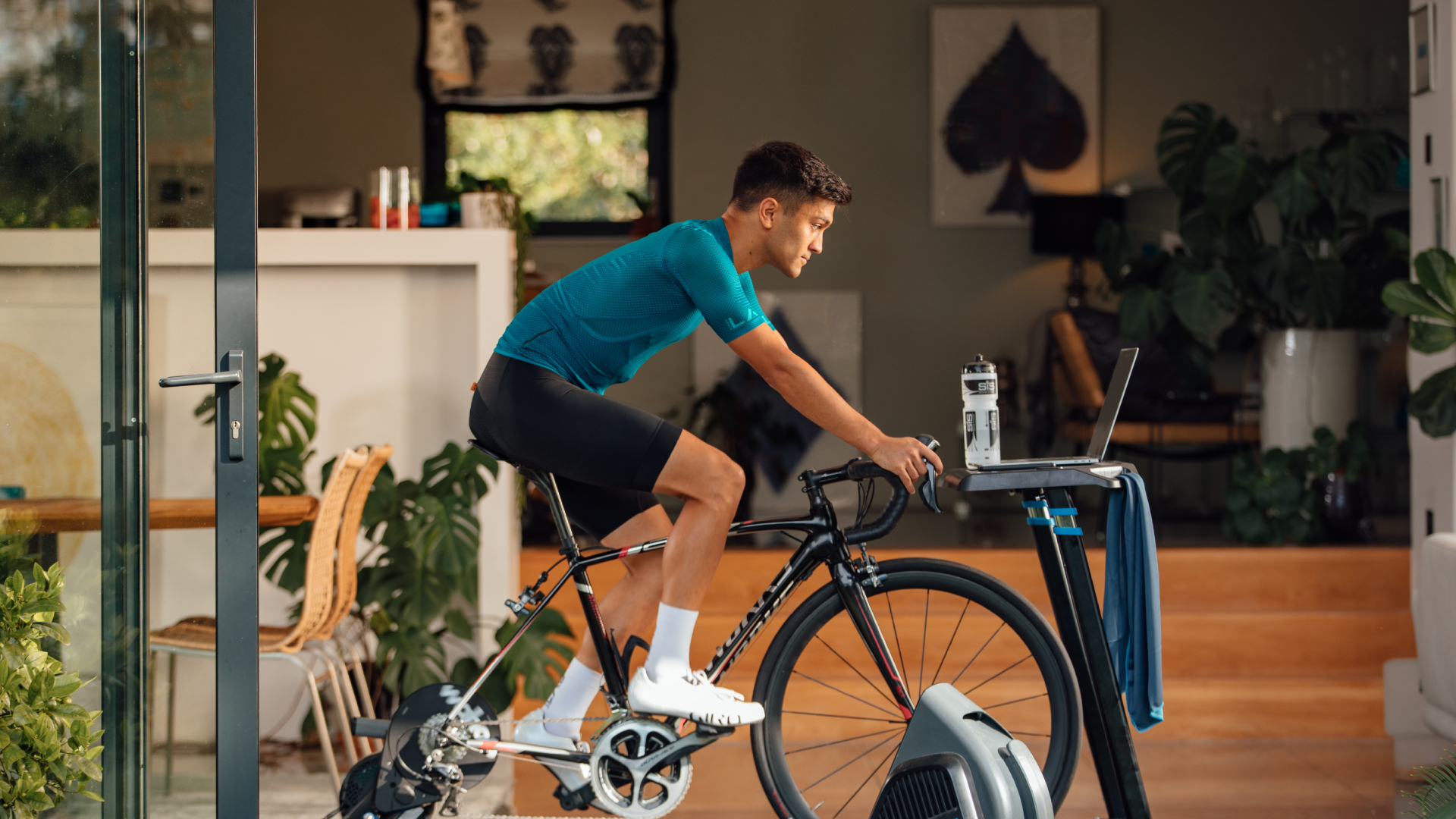
Traditionally used to eliminate variables like weather during progress and fitness testing, the best smart indoor trainers are fast becoming an essential piece of kit. The increase in online racing and the growing social scene around third-party cycling apps like Zwift and Rouvy, are bringing a new level of enjoyment to the endeavour.
While some riders may still prefer the best bike rollers, it is generally accepted that direct-drive turbo trainers are the best tools for indoor training. For those with a dedicated space who take training seriously, one of the best smart bikes is worth considering.
So, what is a direct-drive smart trainer? Direct-drive means your bike and effort are directed straight through the trainer unit. This method allows greater data accuracy and breadth of metrics for better connectivity, along with increased realism by offering better gradient simulation and resistance from the unit.
In this guide, I have included the eight best direct-drive trainers from our testing, all conducted using Zwift. The Tacx Flux S is awarded best overall for its excellent ride feel, stability and smooth ERG mode, with the extremely popular Wahoo Kickr Core offering the best value.
We recognise that getting started with indoor training can be daunting. If you are new to this, you may find our beginner guide to Indoor training or the best cheap smart trainers guide helpful.
The Quick List

The extra cost of the Kickr gets you greater accuracy, an impressive ride feel and a painful-sounding 16% gradient replication. It is a little lighter than the Flux, which helps if you have to move it around, but it is an awkward shape for storage.
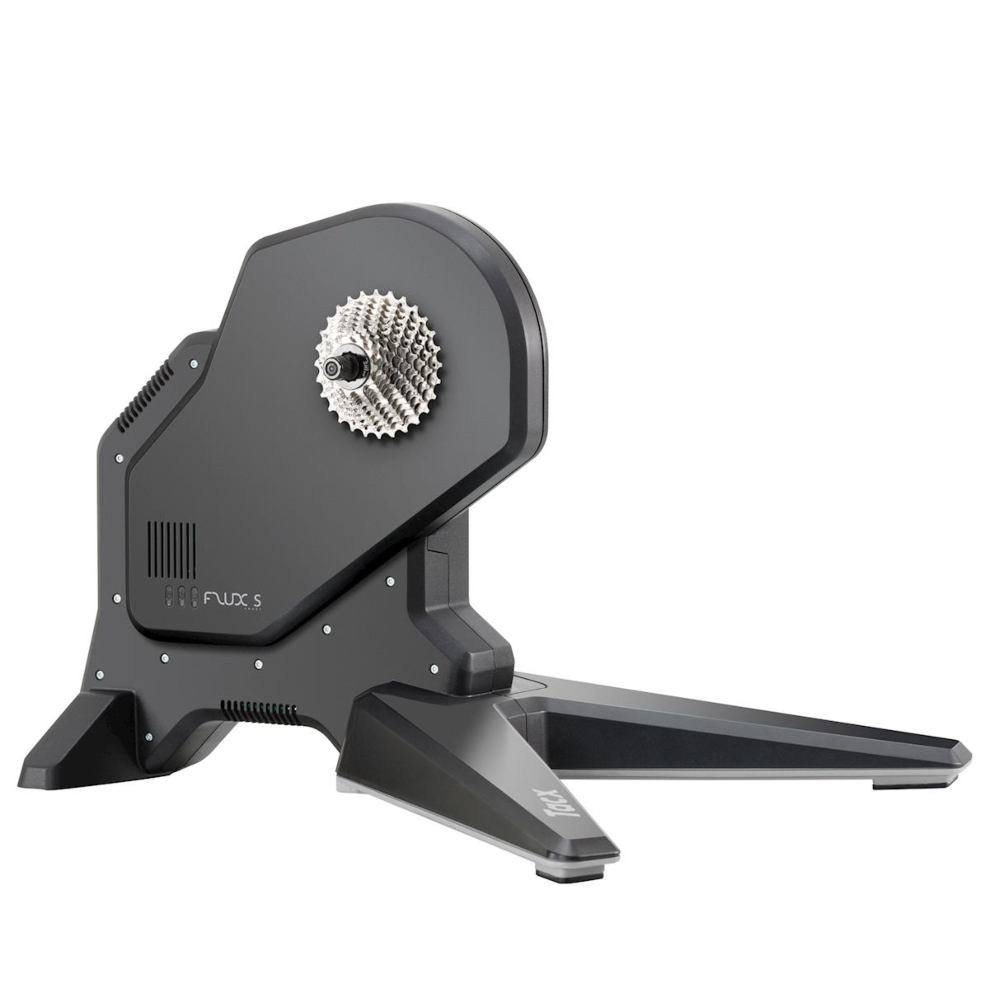
An excellent option if you have the space for a permanent set-up, the Flux S has an excellent ride feel, good stability and a very smooth ERG mode but it isn't very portable or packable. It also lacks ultimate accuracy and gradient replication for serious Zwift racers.

Don't be fooled by the Zumo's low cost and weight, it packs a lot of performance into that small package. A great option for those who regularly need to pack it away or take it on the road.
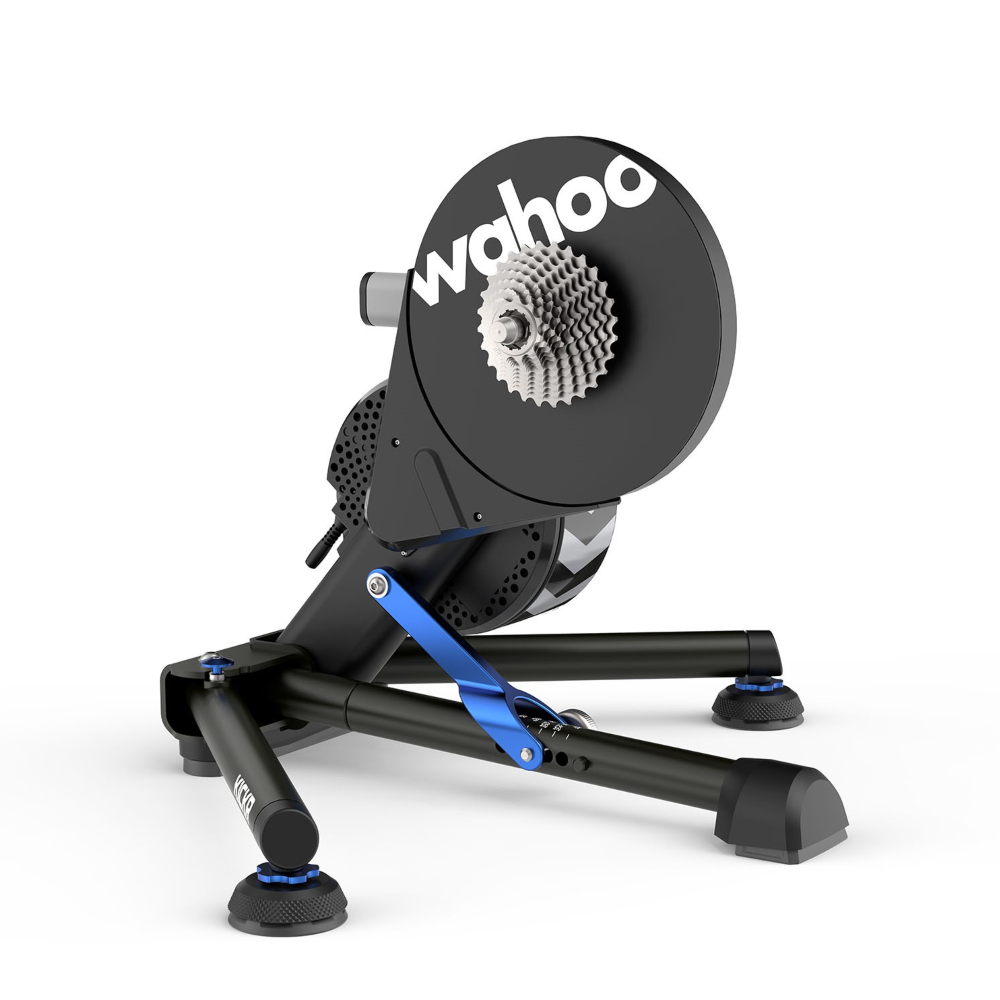
Wahoo's Kickr V6 is a superb way to enjoy indoor training. ERG mode is smooth, ride feel is excellent, and you won't hit the 2,200 watt buffer when it comes to power measurement. It can connect to Wahoo's stable of peripherals, such as the Climb and Headwind, while auto-calibration and firmware updates keep it accurate.
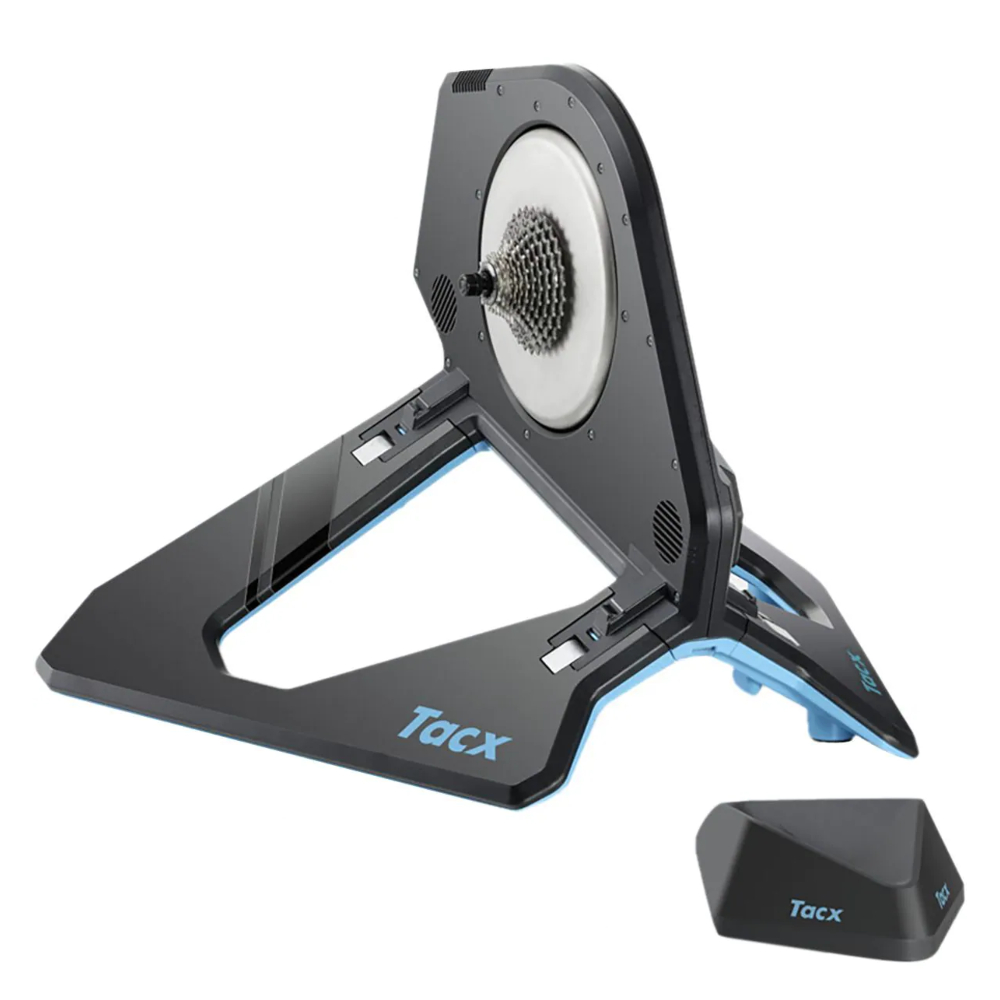
The Tacx Neo 2's party trick is its ability to simulate surfaces such as cobbles for extra interest and realism. It does this well, and the in-built flex also helps to more accurately reflect the feel of riding outdoors. ERG mode feels nicely fluid too, but it is a large unit when it comes to storage.
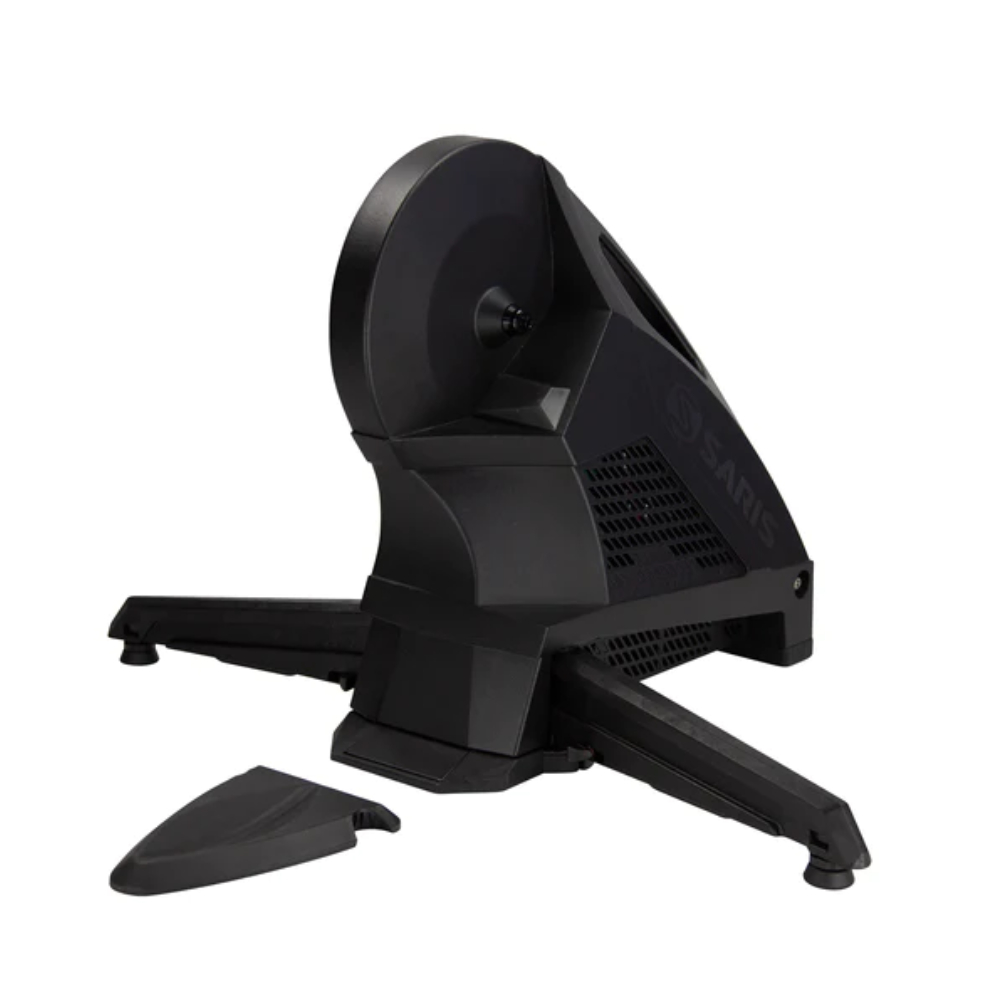
Offering little in the way of extra features, the H3 does provide an accurate and stable platform on which to train, with 2,000 watts of resistance and up to 20% gradients. This makes it perfect for hard interval sessions or sprint training and when you are finished, it packs away easily too.
Load the next 2 models
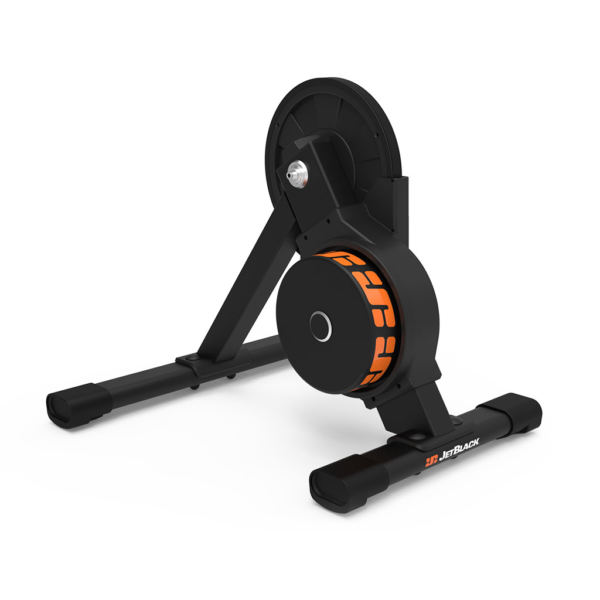
If you can't find the Wahoo Kickr Core in stock, then you should absolutely consider the JetBlack Volt 2. On paper, the two are very similar; it's just clear the Kickr Core is more refined. That doesn't take away from the Volt's decent value.
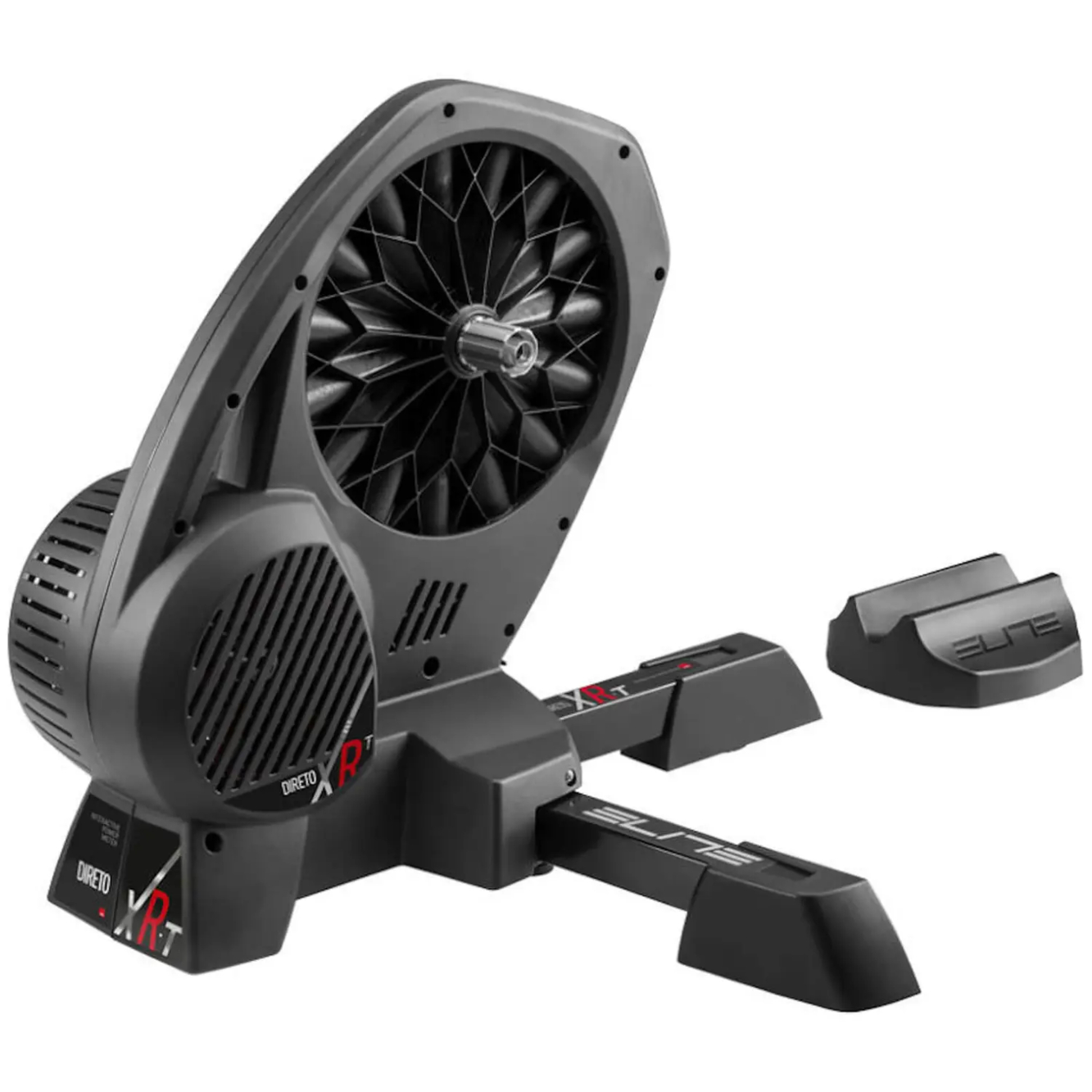
We only give the Elite Direto XR-T an honourable mention, as it doesn't quite keep up with Wahoo and Taxc. However, the Direto is good value, and maybe because of its competition, it can quite regularly be found discounted.
Our top-rated best direct drive smart turbo trainers
Best value direct-drive trainer

The Wahoo Kickr Core has much of the functionality of Wahoo's higher spec trainers
Wahoo Kickr Core
Our expert review:
Specifications
Reasons to buy
Reasons to avoid
The Wahoo Kickr Core and the Tacx Flux S, despite being top performers, have little crossover. I'll blast through the fundamentals because, like the Tacx Flux S, the Wahoo Kickr Core executes these so well that it’s worth spending a bit more time on the hair-splitting points of differentiation.
Starting with the ride feel, I’d actually argue that the Core does better (in some aspects) than the flagship Kickr V5 I tested last year (although the Wahoo Kickr V6 and Wahoo Kickr Move have now surpassed this model).
How can this be? Well, my assumption is that it’s down to the weight of the flywheels. With the Kickr V5, it always felt like there was a great deal of inertia to spin up when accelerating – for me, it was a little less like riding out on the open road and a little more like that of a ‘spin bike’, with their huge fixed-gear flywheels.
The Kickr Core, with the flywheel being 5.4kg compared to the 7.3kg of the V5, felt a bit more natural for me when I was accelerating. However, this should be heavily caveated with the point that if you’re a heavier rider, you might well find the opposite.
Regarding the response to sudden changes in gradient and interval sessions with ERG mode engaged, the resistance changed smoothly and quickly. As mentioned, the Kickr Core does manage to hit points that the Tacx Flux S has missed. With an accuracy of ±2%, this is one of the cheaper entry points to high-end indoor racing.
However, there are points that let it down in comparison to the Flux S. First is the stability: these two-bar designs are much less stable than three-leg versions, and the Flux is particularly solid.
Best direct-drive trainer overall
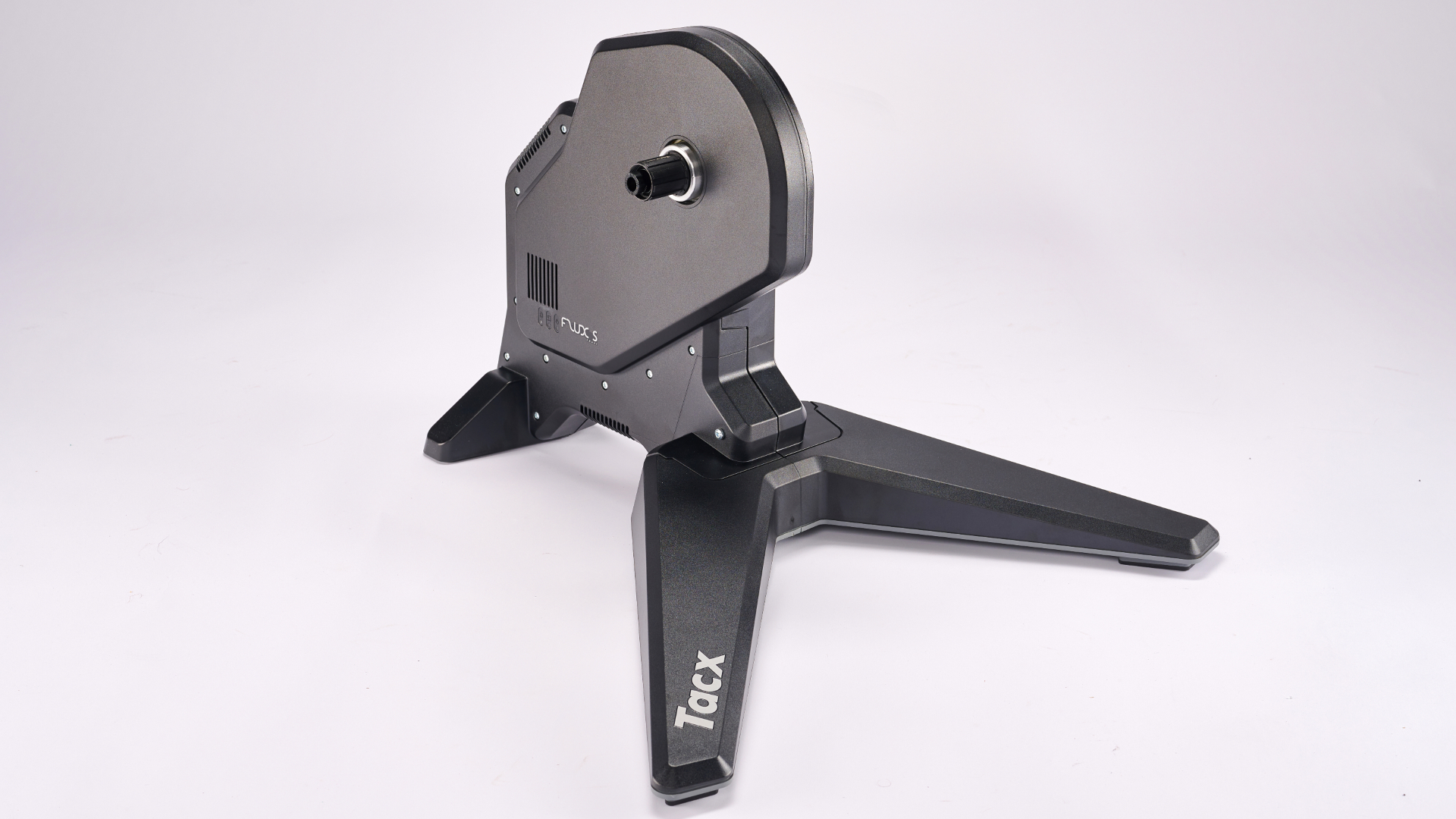
The Tacx Flux S performs above its middling price
Tacx Flux S
Our expert review:
Specifications
Reasons to buy
Reasons to avoid
First off, this is a really great turbo trainer. But that’s what makes this one a little frustrating, as it is just so close to being the obvious go-to for pretty much everyone. However, as it is, there will be some people for whom it’s not quite right.
With the heaviest flywheel on test, the Flux S also comes in as the heaviest trainer overall. Couple that with its unique footprint and you’ve got an incredibly stable platform – I’d say even potentially a little more stable than its big brother, the Tacx Neo 2T, which I tested last year. However, this is not a trainer for moving about regularly or stowing away. The legs don’t fold and it is very heavy.
Likewise, this entry-level model's resistance and ride feel are impressively close to the flagship model. Changes in gradient were fast and smooth, while the resistance remained steady even when climbing at a low speed and low cadence—a challenging combination for a trainer. Couple this with an ERG mode that copes well with even large differences in power. You are looking at one of the best on test.
Is there any point in buying a more expensive model?
Sadly, yes there is. But only for people with quite specific use cases.
First, the accuracy. Rated at ±3% this is the same as the Zumo. But it’s worth pointing out this doesn’t meet the ±2% cut-off for the upper echelons of Zwift racing. For most people, this isn’t a consideration – the majority of Zwift users aren’t serious racers, and it’s only a very small subsection of them who would be racing in those categories, but it’s worth being aware of.
The maximum simulated gradient might also cause some issues; at only 10%, it's considerably lower than others and won't exactly replicate some of the more iconic Zwift climbs.
Most Portable
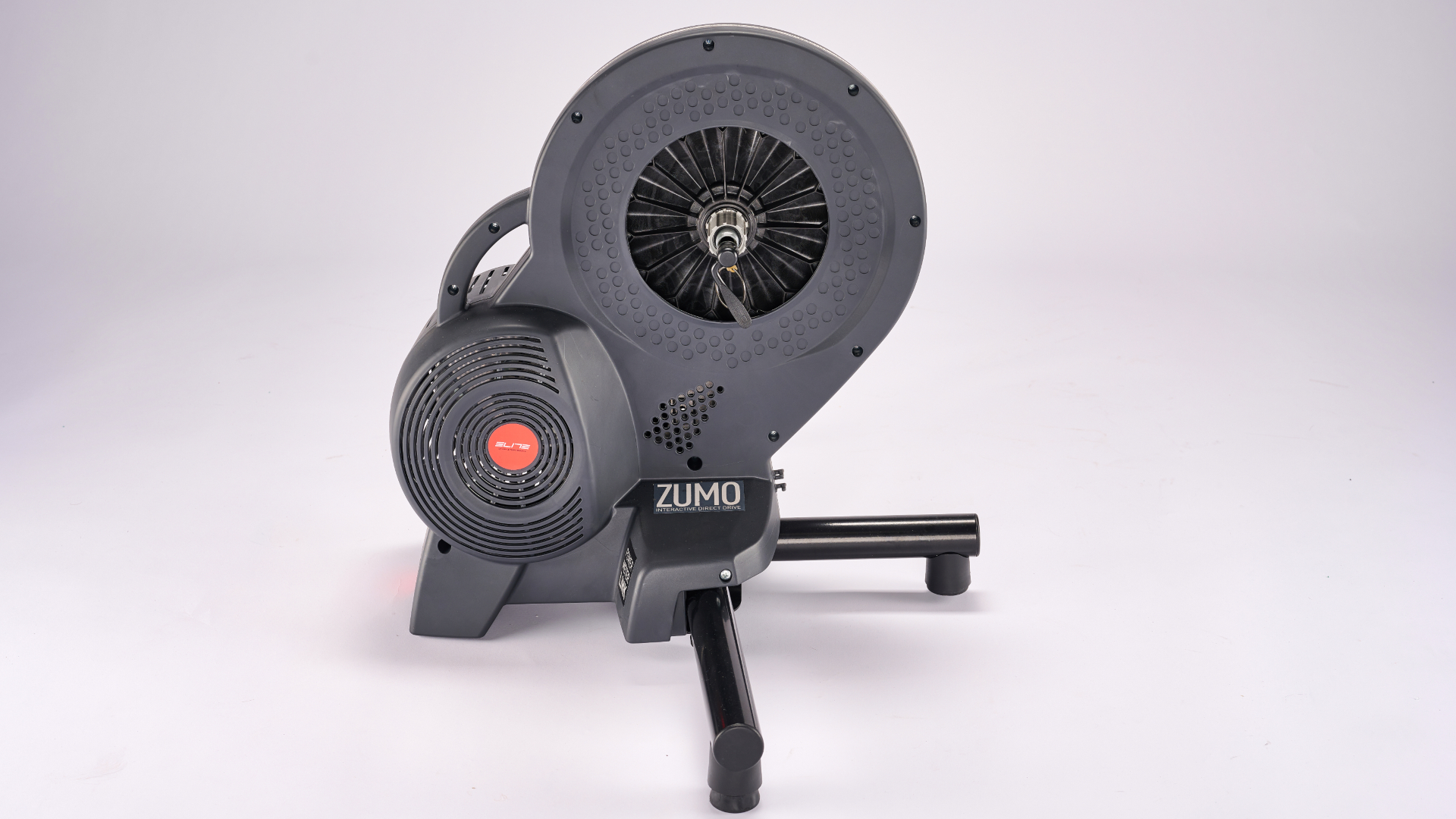
The Zumo was the least expensive in our four-way test
Elite Zumo
Our expert review:
Specifications
Reasons to buy
Reasons to avoid
The Elite Zumo’s spec sheet totally belies what a well rounded trainer this is. The cheapest trainer on test, it’s also the lightest and has the lightest flywheel, the claimed accuracy is joint worst at ±3% and the maximum resistance is the lowest at 1,350W. The slope simulation stands out as being the second shallowest at 12%.
Most of those points are immaterial, though. The max gradient of 12% is still more than enough for all your low cadence/high power interval needs—it’s just that you’ll be pushing a slightly larger gear than with a Tacx Neo 2T or a Wahoo Kickr. The maximum resistance of 1,350W is low compared to others, but most amateurs like myself won't be troubled by this.
So far, so good, but the flipside is that when riding in ERG mode and doing a session such as 20/40s or 10x1min—anything where there’s a big power differential—you can quite easily end up in something of a ‘death spiral’ of ever-increasing resistance as you struggle to spin your legs up to speed.
This is true of all trainers to some extent. It’s generally a good idea to spin up your cadence just before entering those intervals to give yourself a bit of a buffer. But this was a particular issue for the Zumo and was also a problem for the higher-end Direto that we tested last year, so it seems that this is a more general problem for Elite.
Overall, the Zumo is super portable thanks to its carry handle, foldable legs, and lightweight build. At the same time, it’s very stable thanks to its wide footprint, and the resistance is very nicely controlled and feels very smooth despite the smaller flywheel.
Best All-Round
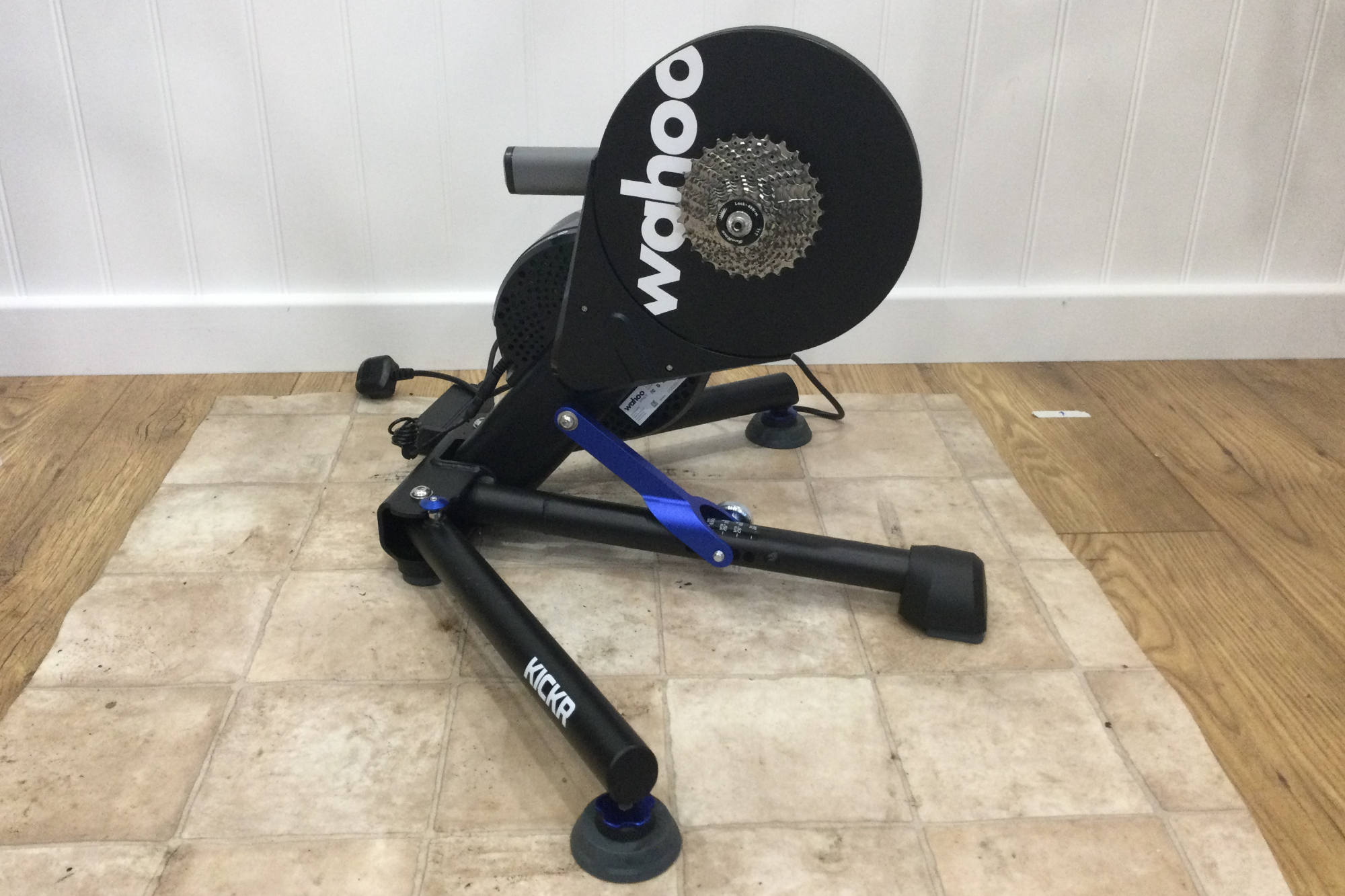
WiFi connectivity makes for easy set-up of the Kickr V6
Specifications
Reasons to buy
Reasons to avoid
The Wahoo Kickr V6 has been one of the top direct-drive trainers ever since the original model was launched 10 years ago. The recent updates have added WiFi connectivity and a smoothed ERG mode which improve the Kickr that much further, albeit incrementally rather than fundamentally.
Should your legs be able to get anywhere close to it, the maximum power of the Kickr V6 is 2,200W, it offers a simulated gradient of -10% to +20% and power accuracy of +/-1%. All impressive numbers.
Our tester found that the ride feel is impressive too; smooth and responsive with a well-tuned ERG function that does such a good job at matching your torque and cadence to your power targets that you wouldn't know it was happening if it wasn't for the numbers in front of you. The new ERG Easy Ramp gives you a bit of leeway to get going again should you dare slack off your effort for a few seconds.
As well as automatic firmware updates, integrated WiFi allows for easier and more stable connection to your devices which will help you and your system keep up with the capabilities of the training apps and the ever-more immersive virtual riding experience.
Read our full Wahoo Kickr V6 smart turbo trainer review
Best ERG mode
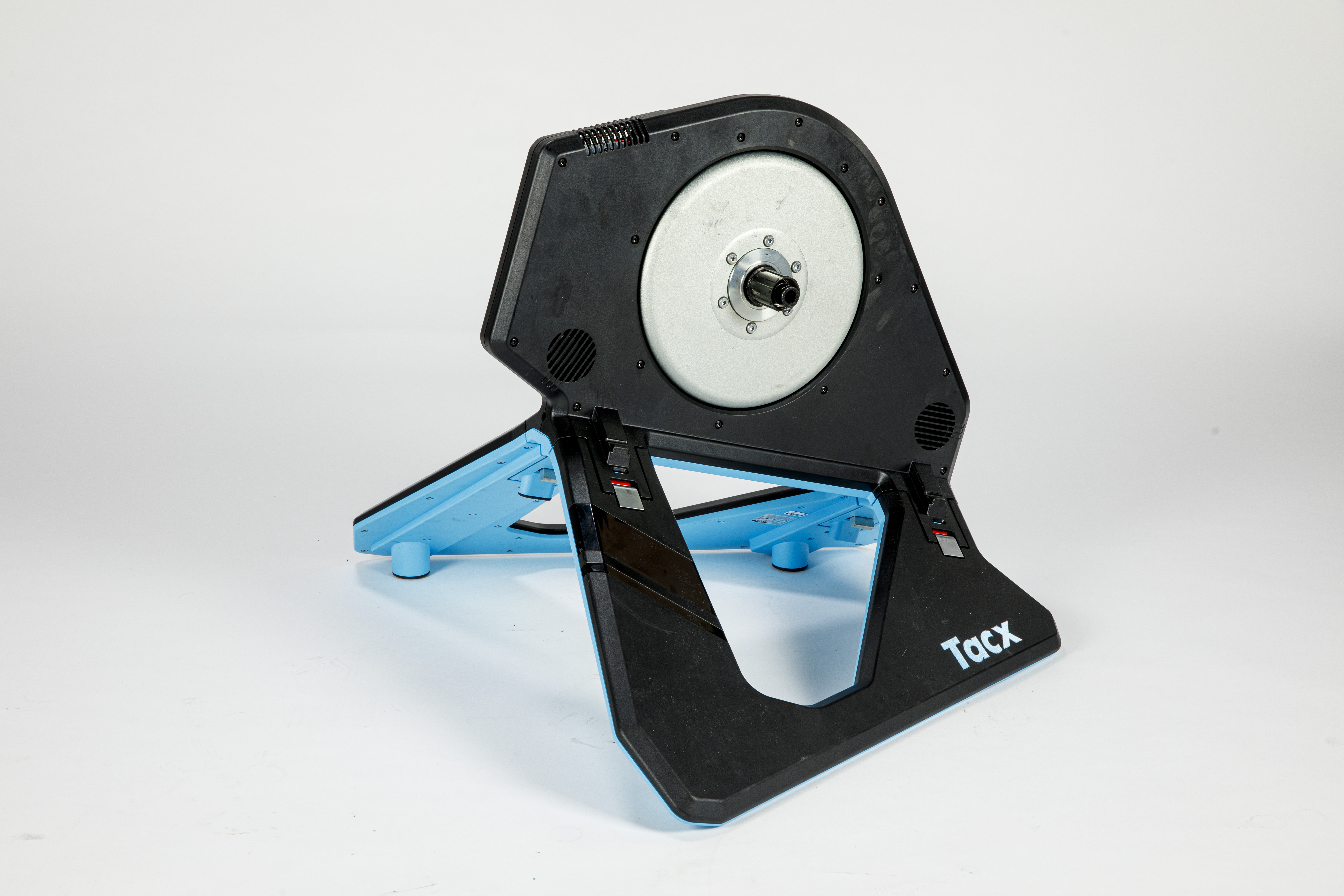
The Tacx Neo 2 can simulate riding on gravel and cobbles
Specifications
Reasons to buy
Reasons to avoid
Naturally, being the most expensive trainer on test, Tacx also offers the most added features. Equally, by charging such a premium, Tacx has set a very high bar for itself that it now has to clear.
However, once set up, the Neo 2T does deliver a pretty unique riding experience—for one thing, it’s able to simulate the sensation of riding over cobbles, wooden boards, and other surfaces quite realistically. There’s also a large degree of inbuilt flex to better simulate the natural sway of riding outdoors.
The Neo 2T’s electromagnetic flywheel really nails the feeling of sprinting out on the road. It’s all very impressive, but realism can be more of a hindrance than a help for sprints and hard efforts. That inbuilt flex makes the turbo feel a bit of a noodly and hampered my top-end power output. Also, the lifelike mimicking of the resistance when sprinting means that you’re forced into quickly shifting through the gears, increasing the chances of a miss-shift.
The ERG mode felt very fluid, and the resistance changes felt nicely natural – even for large swings, as in a 30s on 30s easy session. A bonus is that the trainer doesn’t need to be calibrated, so you can just hop straight on and go, which is always nice. Also, the watts drop to zero pretty quickly, so it’s good for that aspect of Zwift racing, if not so good for sprinting.
Read our full Tacx Neo 2T smart turbo trainer review
Most Stable
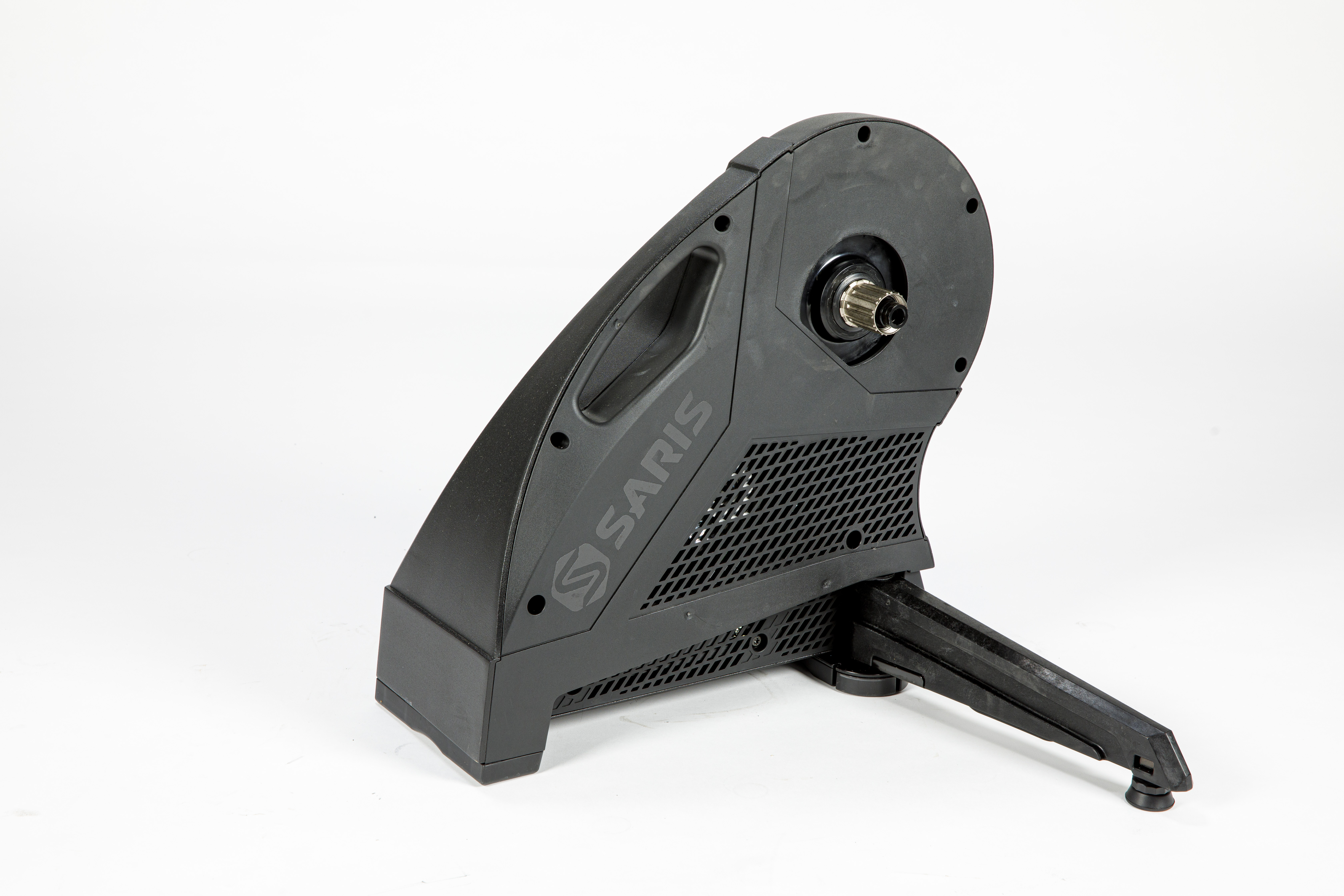
The Saris H3 is very stable under out of saddle efforts
Specifications
Reasons to buy
Reasons to avoid
The Saris H3 is the most pared-back of all the trainers on test. In terms of extras, there’s no option for a riser unit to lift the front wheel, and there’s no inbuilt rocking function to simulate the sway of a bike or any other novelties to add to the indoor riding experience. Instead, the Saris is all about delivering a solid platform for hard efforts – which could very well be all you're after.
Although not the heaviest, the Saris H3 is the most solid direct-drive turbo I’ve come across. That’s not to say it stays perfectly in place – not even the Tacx Neo Bike Smart does – but it represents a significant step up from other trainers. Like the Elite Direto XR-T, the resistance curve when sprinting also has a good feel to it, not requiring an excessive number of shifts as you wind up the watts.
The sensation of the ERG mode is kind of middle-of-the-road. I didn’t have any issues with death spirals of ever-increasing resistance, and the changes in resistance didn’t catch me by surprise. But it did lack a bit of a feeling of souplesse that the Tacx Neo 2T and Wahoo Kickr have been able to capture.
Onto the negatives, the fact that you have to manually perform calibration spindowns to keep the power numbers on track adds a bit of extra faff.
Overall, the Saris H3 is a solid option that undercuts both the Wahoo Kickr and Tacx Neo 2T.
Read our full Saris H3 smart turbo trainer review
Best Wahoo Kickr Core alternative
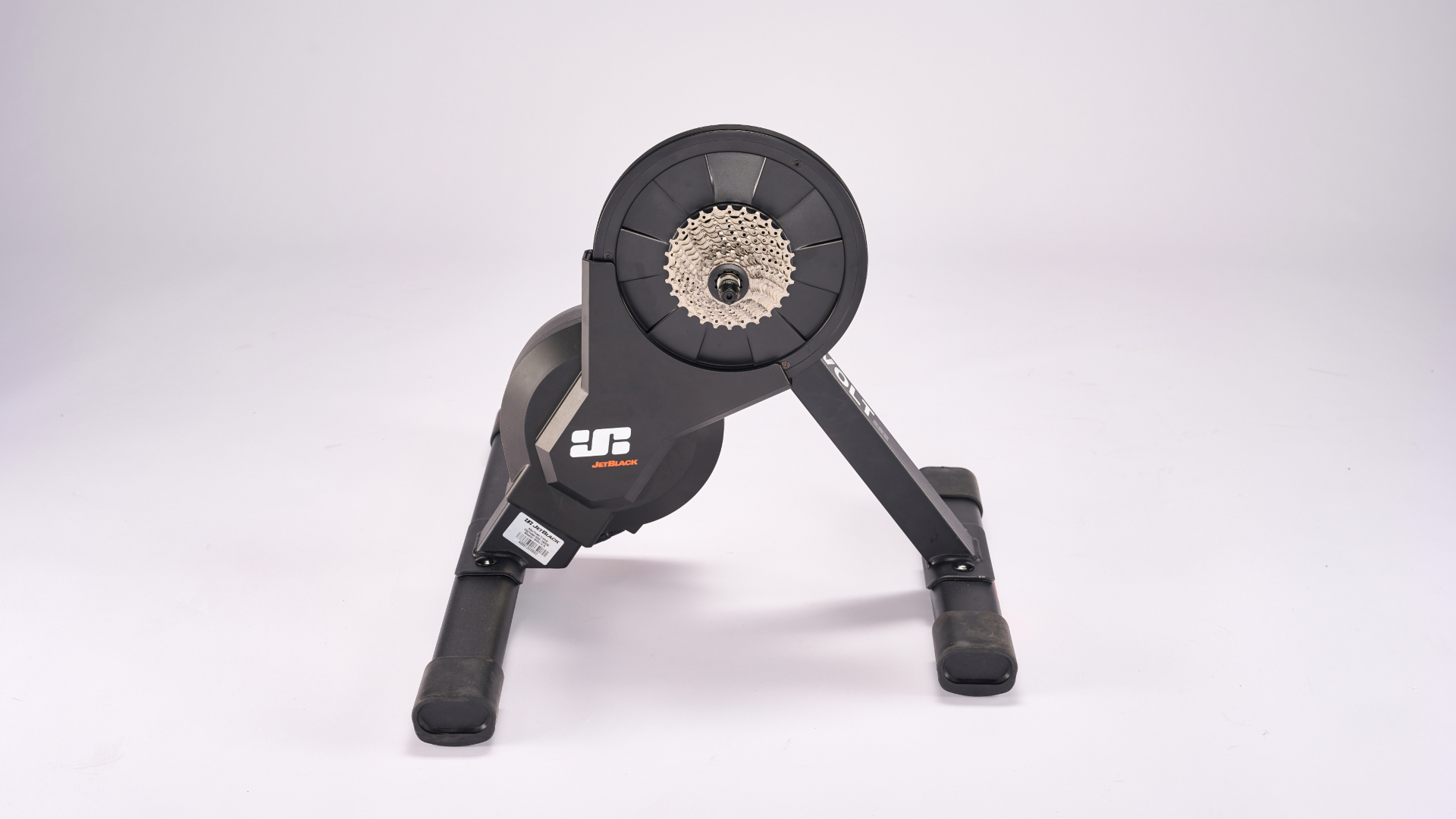
The Jet Black trainer is easy to move around
JetBlack Volt V2
Our expert review:
Specifications
Reasons to buy
Reasons to avoid
Let’s get this out of the way first: the Jet Black Volt V2 looks similar to the Wahoo Kickr Core. Coming in at the same list price, simulating the same maximum gradient and delivering the same maximum resistance, you might start to wonder if anything is different at all.
On closer inspection, the two trainers are distinct in quite a few areas. The first clue is in the weight: 15.4kg for the Jet Black Volt V2 compared to 18.0kg for the Wahoo Kickr Core. Part of that is down to the heft of the flywheel, coming in at 4.7kg for the Jet Black—the second lightest on test—compared to 5.4kg for the Wahoo Kickr Core.
The performance is also quite different – although this doesn’t reflect so well on the JetBlack. The resistance felt distinctly choppy when riding the Volt V2 on steep virtual climbs. It was like pushing through treacle between two and four o’clock on the pedal stroke, but past that, it would ease up significantly - almost slipping past - before ramping up again at two o’clock on the other crank arm.
To be fair, this wasn’t an issue when pushing higher power and cadence numbers (around 270w and 90 RPM), but the 180w and the 70 RPM that I was having these problems at aren’t ridiculously low. Even the most powerful riders ride around that level when recovering between intervals – and for others, this will be within their training zones.
Overall, the Tacx Flux S simply has a significantly better ride feel and, in those areas where the Flux S isn’t the test leader (i.e. accuracy and gradient simulation), the Volt V2 doesn’t ‘do the double’ either and so isn’t a compelling option.
Honorable Mention
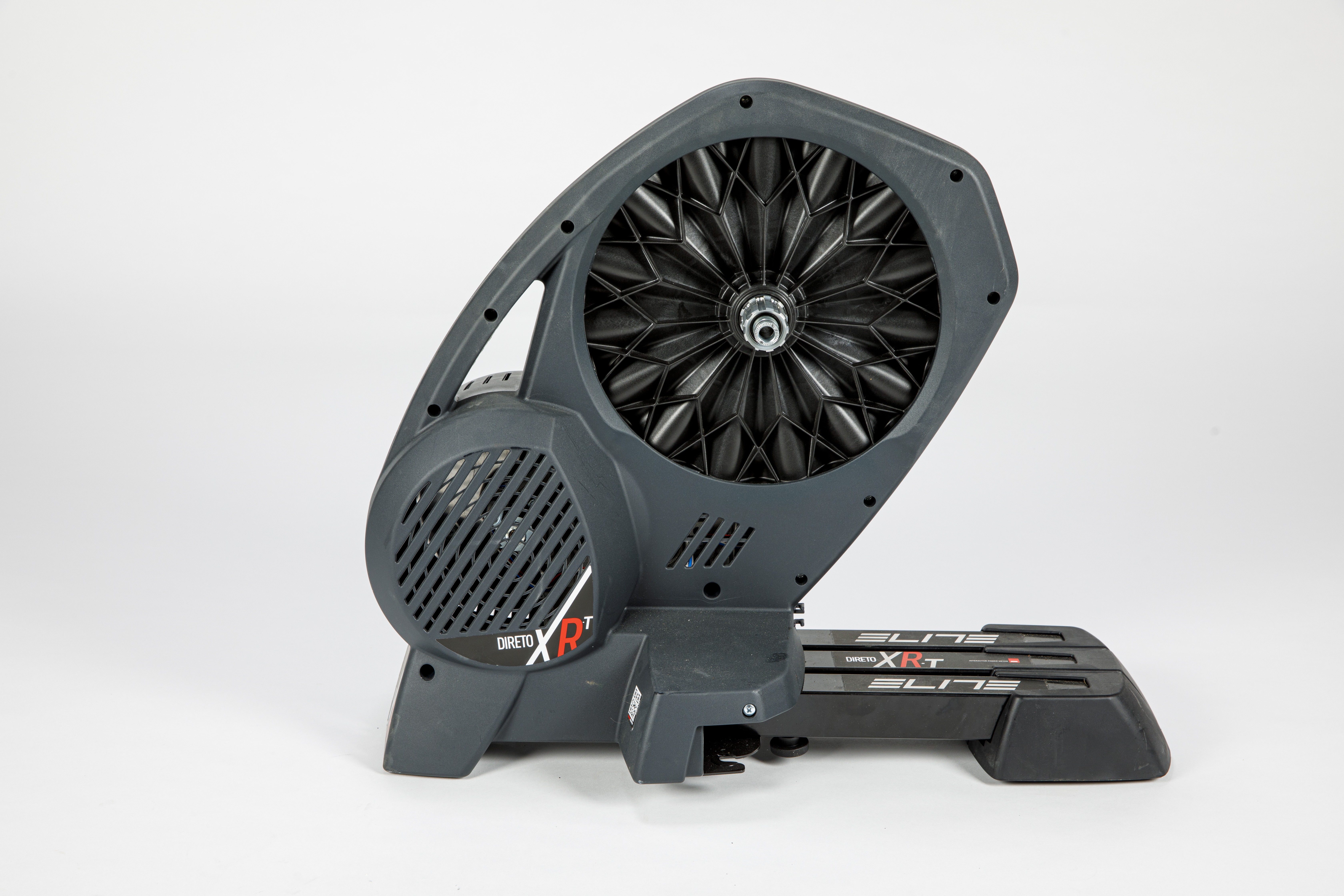
You can often find the Elite Direto at a discount
Specifications
Reasons to buy
Reasons to avoid
Given how well the Elite Direto XR-T performs in most areas, it's a bit of a steal compared to the Wahoo Kickr and Tacx Neo 2. It is one of the top smart trainers. I found it to deliver consistent power readings, respond well to changes in virtual gradient, and have a realistic feel when I really put the hammer down.
The Direto also feels very stable, despite a noticeable lack of heft compared to other units I have used. However, it isn't the most compact; if that's what you are looking for, then the Elite Zumo is a better match.
Where Elite loses ground on the competition is its responsiveness in ERG mode and, specifically, in its being too biased towards piling on the resistance and almost being too responsive. You have to really work hard to keep a very consistent cadence as any drops saw the XR-T add what felt like far to much resistance. This would happen in 30sec on and off as well; you would have to really build the cadence to hit the 'on' without hitting a brick wall. Maybe it's me, but I certainly didn't have these issues with other units, which were a little more forgiving.
On the flip side, once you got into Zwift, it was the opposite, moving very slowly to zero and seemingly not responding whatsoever.
Now, if you're not using the ERG mode or don't plan to race your way around Watopia, then that's not really an issue, and you could actually save yourself some serious dollars over the top two.
Read our full Elite Direto XR-T smart trainer review
How we test
The Cycling Weekly team has ridden hundreds of virtual kilometres on all the smart trainers in this buyer's guide. The overall score is based on ease of setup, app connectivity, specification, and portability.
We do those in various ways. The first is to live with and use these trainers in multiple sessions. This allows us to find the base and test the trainer's ability to accurately replicate sessions and data. These findings are then cross-checked against a power meter or other forms of home trainer.
While most of our testing is completed on Zwift, allowing us repeatable reference points, we also check compatibility with other third-party indoor cycling apps where possible.
Perhaps most importantly and although subjective, we try to relay the concept of 'ride feel' - that is what pedalling feels like on the trainer during a variety of different efforts. This perhaps more than anything else, dictates how enjoyable a trainer is to use.
FAQs about smart indoor trainers
What are the different types of turbo trainer?
Direct drive trainers
Direct-drive turbo trainers take the bicycle's rear wheel out of the equation by attaching directly to the drivetrain, hence the name. As the drivetrain is directly linked to the turbo trainer, taking its power measurements from the cassette rather than the tyre, the direct drive offers a higher degree of accuracy. By forgoing the need for the rear wheel, you will save on buying new tyres regularly. However, an additional cassette or cog is required to be permanently attached to the unit.
Usually requiring a power source, this style of turbo trainer houses an electronic motor which automatically applies resistance when an app is connected to it.
Wheel-on Trainers
Fairly self-explanatory, wheel-on turbo trainers require your bicycle to be placed in a raised cradle that allows the rear wheel to run across a drum or cylinder. These trainers have two popular forms of applying resistance, magnetic and fluid resistance.
Many of the more affordable turbo trainers in the market will use magnetic resistance, manually applied by the rider, making them unsuitable for app connectivity. Those wheel-on units that offer smart functions will most likely be fluid units, due to the smoother nature of how the resistance is applied.
Wheel-on units are generally more affordable but lack the data accuracy that Zwift and other indoor cycling apps require.
What are the alternatives to smart turbo trainers?
If you have a dedicated space for indoor training, you could consider an exercise bike or a smart bike. These allow for a consistent setup, a more immersive experience and can be a one-stop shop as many include screens, fans and personal trainers.
Rollers are the perfect training tool for those who find indoor training monotonous. They don't just get your legs spinning, they can also help improve pedal stroke and riding in tight spaces like a bunch or peloton.
Let us not forget, that you could fit a set of mudguards, purchase a winter cycling jacket and just get out on your bike, whatever the weather.
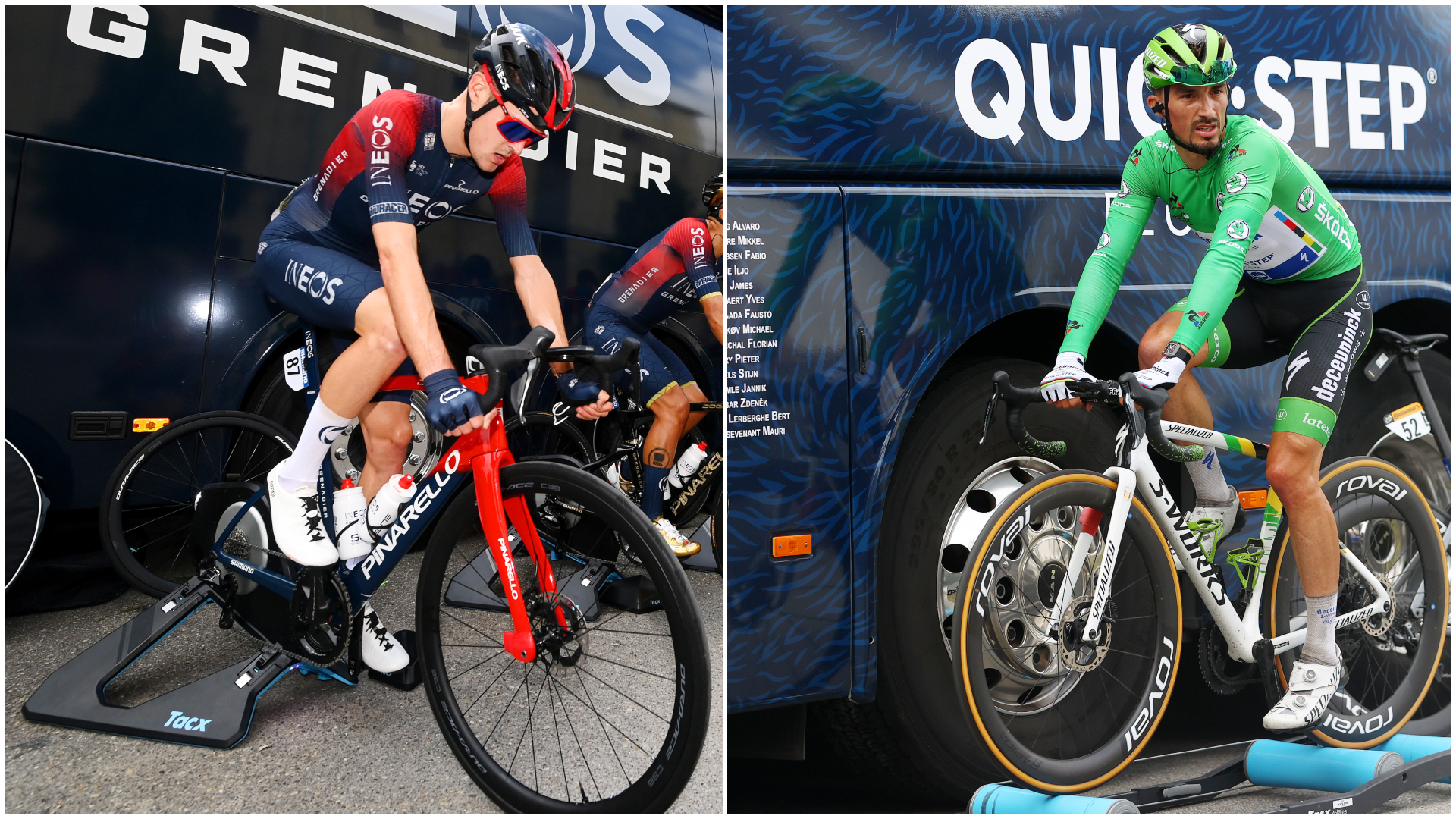
Rollers are an alternative to a turbo trainer for more experienced riders
Why choose a smart turbo trainer?
For many people, a standard magnetic wheel-on turbo trainer may do the trick, but going for a smart trainer will ensure a much more engaging and measurable training session.
Firstly, their smart functions mean that they can connect to a whole host of indoor training apps like Zwift, TrainerRoad and Wahoo RGT. Apps like Zwift interact with your turbo trainer to measure your effort and apply it to a virtual avatar riding in a simulated world against other people over the internet - much better than staring at a garage wall.
Other apps like Rouvy and Wahoo RGT enable you to recreate any real Strava ride you've done. For example, if you've found the perfect training route but can't get out of the house, the trainer can realistically mimic every dip and climb. You can even replicate a ride in the Alps in your living room!
The other main benefit is that you can complete your session without being interrupted by traffic, stoplights, hills or corners. If you've planned anything from power-based steady-state intervals to sprint reps you ideally need a consistency of conditions that you can't always find on the open road.
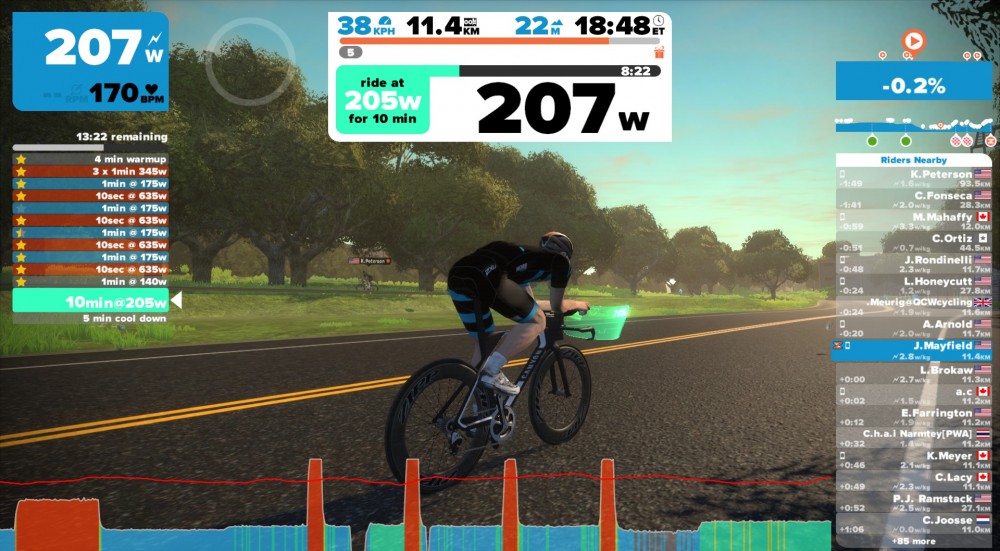
Hook up a smart indoor trainer to an indoor cycling app for a more immersive experience
Can you use any bike on a smart trainer?
Compatibility depends on the manufacturer and the specific model of the turbo trainer, so check before making a purchase. Trainer manufacturers offer comprehensive guides on fitting your bike to the unit, along with the required standards. In theory, assuming your bike's axle standard and cassette type are supported by the trainer, you shouldn't have any issues. If you are unsure of the standards for your bike, check this with your local dealer or bike manufacturer.
While my bike's warranty be covered for use on a smart trainer?
Most modern bike frames are approved for use with indoor trainers, assuming that the rider is within the weight limit and the bike is mounted in the trainer as instructed by the trainer and bike manufacturers. This is not a hard and fast rule; Canyon, for example, only approves frames equipped with a thru-axle for use with direct-drive trainers.
If you are unsure, check with your bicycle manufacturer before making a purchase. Many will be able to recommend which trainers work best with your frame.
What is ERG mode and do I really need it?
In simple terms, when ERG mode is activated, your bike trainer will assist you in maintaining a specific power output by automatically modifying the resistance to correspond with your cycling cadence. Regardless of how quickly or slowly you pedal, the trainer will adjust itself to ensure you stay at that designated wattage.
It's a great tool for those looking to take out manual input and variables in their training. It is also vital for those looking to get started in the world of e-racing.
You can read all the pros and cons in ERG modes explained deep dive.
Get The Leadout Newsletter
The latest race content, interviews, features, reviews and expert buying guides, direct to your inbox!
Like many, Matt began his bicycle industry journey on the spanners at his local bike shop. After spending his youth mountain biking, he was inspired to embrace gravel during his tenure with Evans Cycles' in-house brands, Pinnacle and Hoy Bikes. Recognising the evolving industry, Matt eagerly seized the chance to become an E-bike designer, winning several awards with the E-bike brand Cairn Cycles.
These days, Matt is likely to have a toddler sitting shotgun or off the beaten track somewhere on the South Downs.
-
 How do the pros train? Noemi Rüegg's 26 hour training week
How do the pros train? Noemi Rüegg's 26 hour training weekWinner of this year’s Tour Down Under, the EF Education-Oatly rider is a climber whose talent is taking her to the top
By Chris Marshall-Bell
-
 Save £42 on the same tyres that Mathieu Van de Poel won Paris-Roubaix on, this Easter weekend
Save £42 on the same tyres that Mathieu Van de Poel won Paris-Roubaix on, this Easter weekendDeals Its rare that Pirelli P-Zero Race TLR RS can be found on sale, and certainly not with a whopping 25% discount, grab a pair this weekend before they go...
By Matt Ischt-Barnard
-
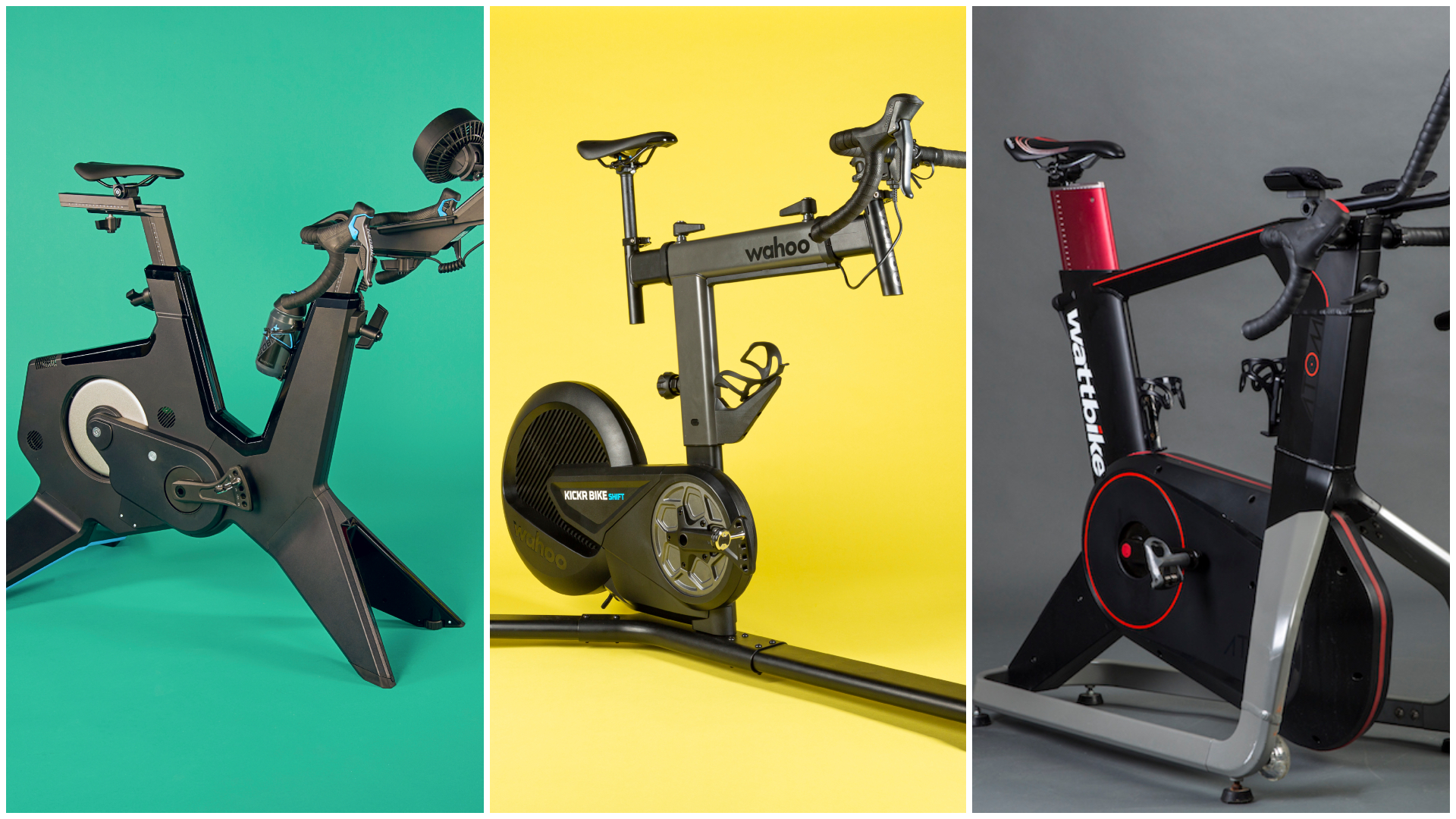 Best indoor smart bikes for training all year round
Best indoor smart bikes for training all year roundThe best indoor smart bikes can keep your training on track no matter the weather, this is our pick of the best.
By Matt Ischt-Barnard
-
 Best headphones for cycling 2025: Indoors and outdoor options
Best headphones for cycling 2025: Indoors and outdoor optionsThe best headphones for cycling let you safely listen to music, podcasts, or even talk online e-racing tactics
By Hannah Bussey
-
 Best exercise bikes 2025: for home workouts and spin classes, all tested and rated
Best exercise bikes 2025: for home workouts and spin classes, all tested and ratedImprove your warm-up, get your legs spinning or add cardio to your training with the best exercise bikes, that are always ready to ride.
By Hannah Bussey
-
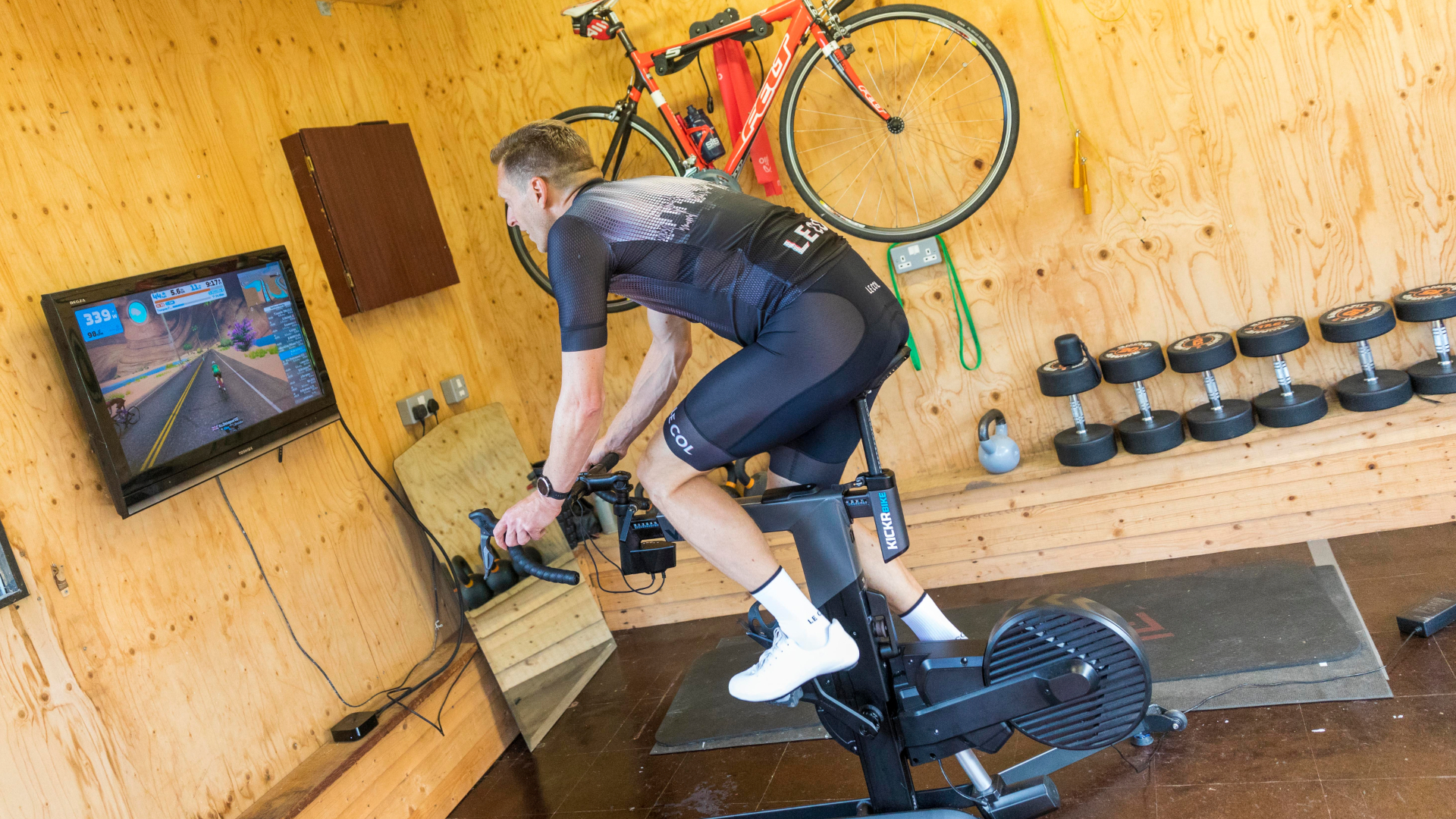 Best indoor cycling clothing: to keep you cool and going nowhere in comfort
Best indoor cycling clothing: to keep you cool and going nowhere in comfortThe cycling kit you never thought you needed - The best indoor cycling kit to prevent saddle sores and keep your body temperature under control
By Michelle Arthurs-Brennan
-
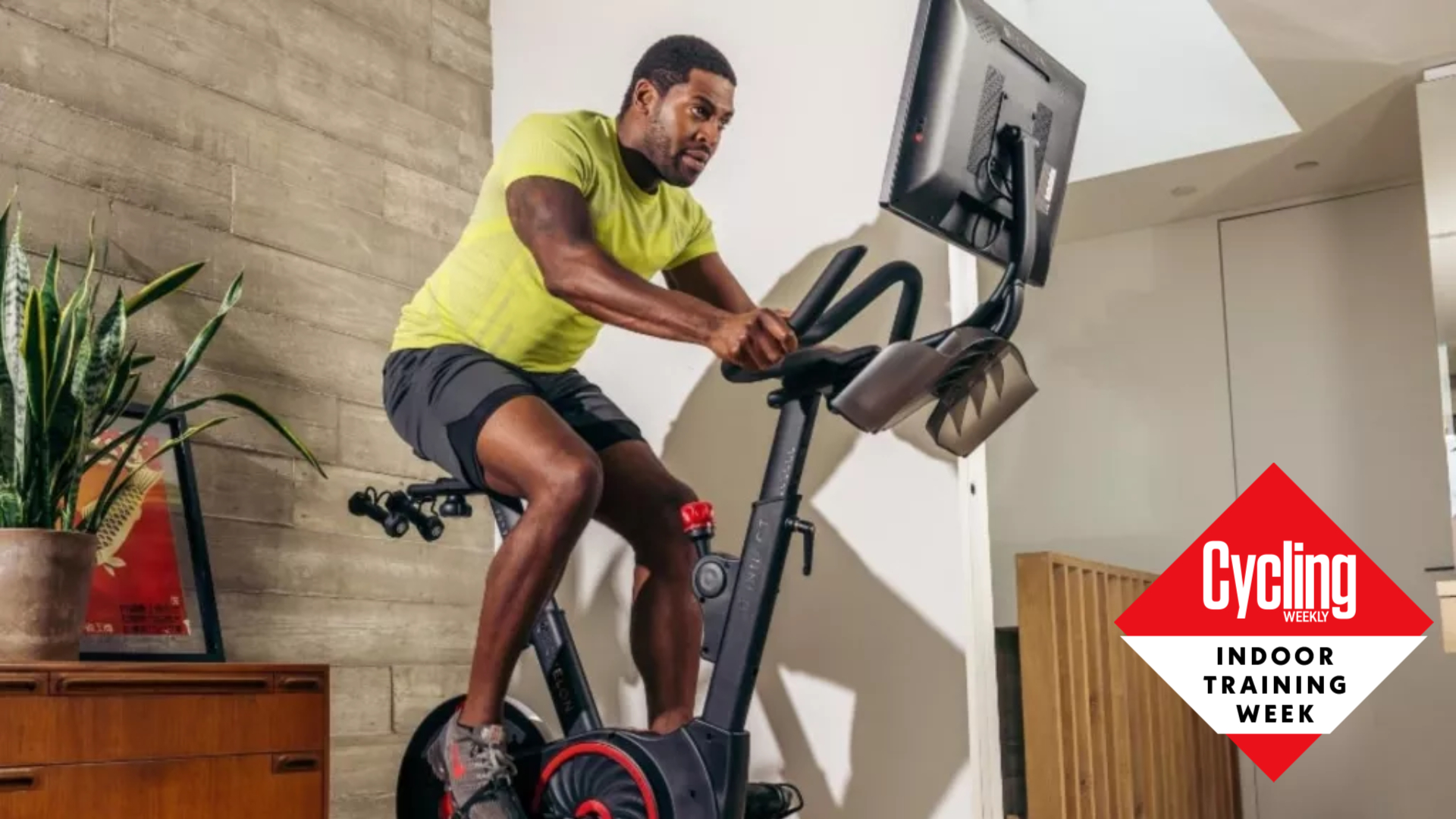 Best Peloton alternatives for indoor cycling
Best Peloton alternatives for indoor cyclingAfter an alternative to a Pelton bike? Here's our pick of the best on offer right now.
By Hannah Bussey